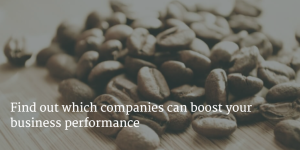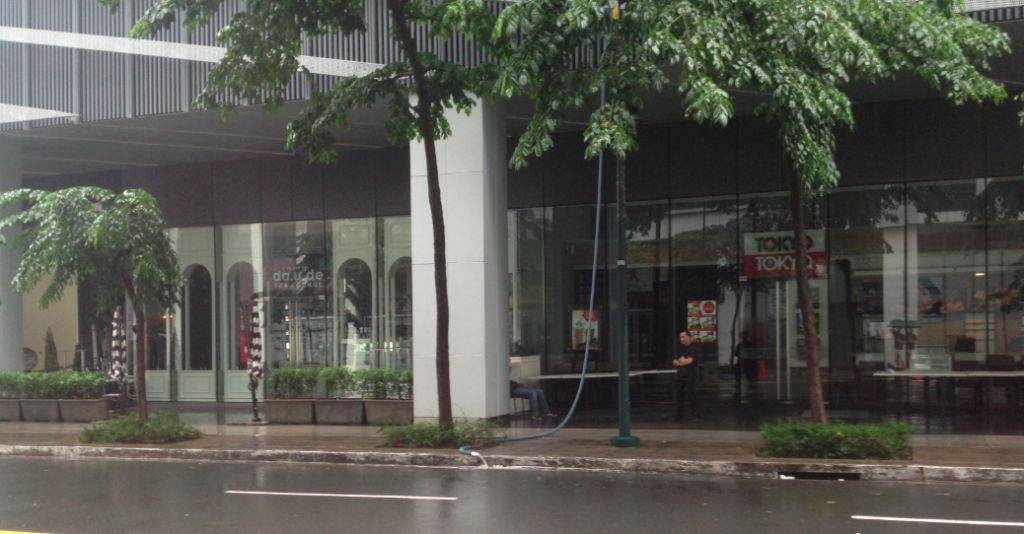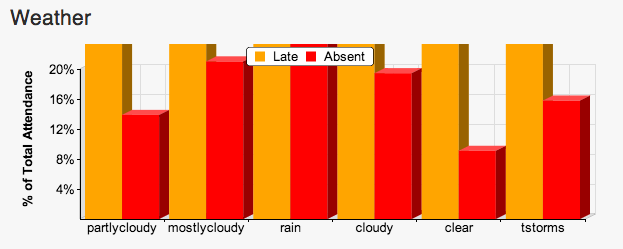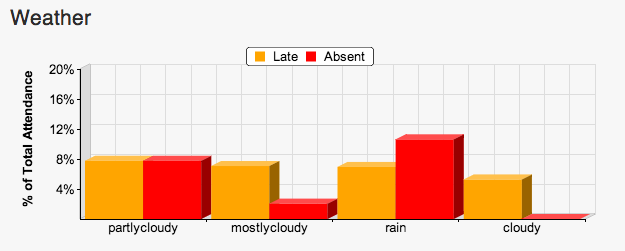We have updated the attendance export report so that it is easier to manipulate the data it contains. Kieran, our head of client success shot a video to show you how powerful the data is when manipulate using pivot tables.
Category Archives: Big Data
How Happy Are Your Employees? Want to Know?
How happy are your employees? Do you know? Do you think it matters?
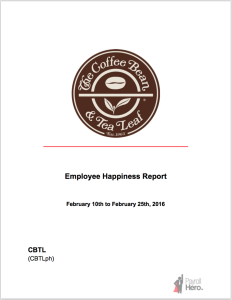 What if you could tell how happy your employees are. Would that change how you make decisions? Would you adjust your operating procedures?
What if you could tell how happy your employees are. Would that change how you make decisions? Would you adjust your operating procedures?
Today we are pleased to announce the Employee Happiness Reports.
“Optimizing Work Productivity with Happiness!” is the core ideal that drives PayrollHero. We’re always looking for ways to measure, track and help clients improve productivity, performance and happiness across their organizations.
We have begun a deep analysis of thousands and thousands of clock photos to analyze the sentiment of the photos. We can then correlate the happiness ratings across other metrics like commute distance, wage, location, plus much more.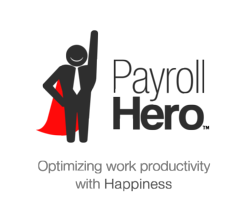
Some clients have begun receiving their beta Employee Happiness Reports and we will continue to work with them to understand what data is useful, how it can be actioned and what else should be included.
Some of the questions we are working to answer are;
- Are my happiest employees the highest paid?
- Which of my retail locations are happiest?
- Do my employees commute times effect their happiness?
- Are my happiest locations my top revenue generators?
Already a PayrollHero client? Want to know the answers as they pertain you your business? Contact us and we’ll get you your first report free.
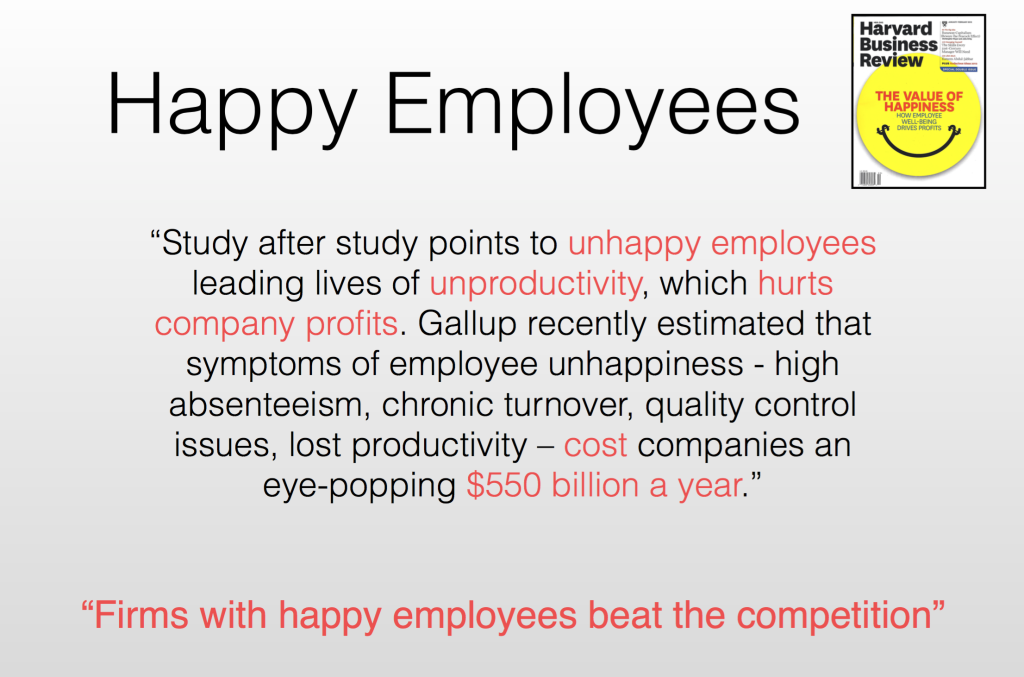
Customer Happiness Tools – Being Ridiculously Client Focused
Customer happiness is essential to everything we do at PayrollHero. One of our favourite catchphrases is “ridiculously client focused”, which means that we want to devote our resources towards making our clients happy. Everything else is secondary. And we aren’t the only ones with that perspective.
Over the last week, the PayrollHero team has been traveling all over the world. While spending an unnatural amount of your time in airports, you can’t help but notice the little things that pique your interest. The pictures that you see are from the London and Dublin airports, where customer feedback stations have been installed. Whether the feedback is about security, bathroom cleanliness (as in the case of Singapore’s Changi airport) or customer service, the idea behind these tools is to ensure that the customer experiences the best that we have to offer.
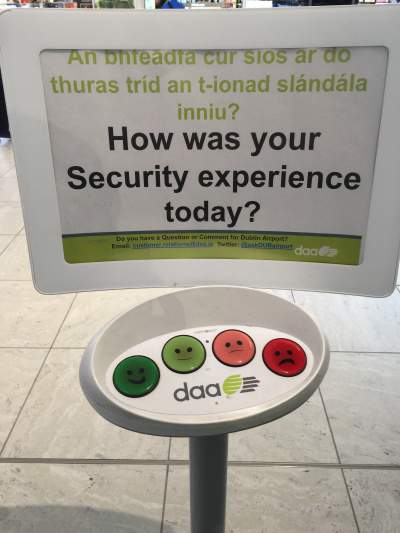
Dublin Airport Security Feedback
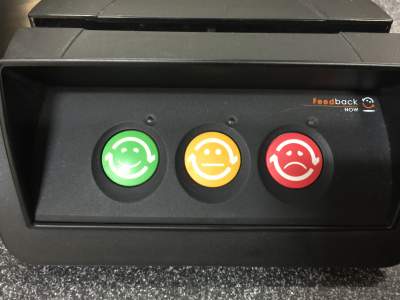
London Airport Security Feedback
The customer feedback tool can be extended to any service. Restaurants, retail stores, bathrooms, anything that involves customer interaction. With data analytics, you can do more than just find out how your outlet is performing. You can reward those who make it happen.
In that vein, PayrollHero created the TeamClock customer feedback tool. Imagine this: the sports apparel retail store you own is visited by a customer five minutes before it is time to shut down. While any other employee would request the customer to return the next day, this employee – let’s name him Bob – decided to let the customer in. Over the next 30 minutes, the customer went through your store and made the biggest purchase of the week, while Bob patiently helped him. While walking out, the customer spent a few seconds on the iPad sitting on your counter, typing out comments about the best customer service he has ever received.
Using the Xray Insights app, you noticed that a particular outlet received excellent customer feedback. With a closer look, you realized that the same employee – Bob – has been consistent with winning awesome feedback from customers. Not only do you have information about how well that outlet is doing, you also know who has contributed towards that outlet’s success.
This makes for an easy and efficient way to reward reliable employees. With data to back you up on how capable your employees are, you can make decisions on whom to promote, to manage other staff or simply reward at the end of the week. This approach allows your employees to be ridiculously client focused as well.
So this is what we have been working on at PayrollHero. The customer feedback tool is currently in beta stage. We will keep you posted with updates and changes that we introduce to the app. Till then, we hope the feedback you are receiving helps you identify the Bobs that make your outlet ridiculously client focused.
Want to get the PayrollHero Customer Feedback tool for your business? Reach out to us today and we would be pleased to speak further about how we can get your establishment setup to gather real time data.
Cloud Computing Part II: 5 Companies that are Changing the way Business is Done
As a sequel to our previous post on cloud computing, we thought we would give you an idea of how cloud computing is being used by companies to help businesses in South East Asia. Below we have 5 companies that are changing the way businesses function. Some of them are catered towards bringing in more consumers through the door while others are helping business move day-to-day operations into the cloud so that businesses can spend more time and money on their core competencies.
Loyalty Apps
Perx: This Customer Relationship Management (CRM) software collects loyalty cards into one neat app. For a consumer, you earn points every time you purchase something. Accumulation of points leads to rewards. Perx says that consumers spend 7 times more with the app than without it. Some of the merchants under Perx’s belt are Subway, Joe and Dough’s, Maki San and Salad Stop.
For you, a merchant, Perx gives a huge client database by putting you on their map. The company uses Amazon Web Services to control all the data it collects. Perx’s data analytics gives information about consumption trends, how much a consumer would spend on lunch, where they are located: in short, everything you would like to know about your customer. Perx offers this wealth of data to all its merchants for a fee. As an added marketing platform, Perx features companies on their email and blog which is sure to boost your presence in the community.
Foursquare: While Foursquare does not collect virtual loyalty cards, it uses its core competency – geolocation data and services – in order to bring businesses to consumers. For businesses that claim their names in the Foursquare directory, all rewards and deals that are offered will be displayed to the user.
Inventory Management
TradeGecko: Singapore’s leading user-friendly inventory management software uses the Cloud. It helps retailers and wholesalers to manage multiple warehouses and the entire supply chain without using conventional methods like excel. TradeGecko allows remote monitoring which helps retail managers to control operations at multiple locations. TradeGecko also has Xero integrated into it to digitize the accounting end of the business as well.
Unleashed: Similar to TradeGecko, Unleashed provides analytics on turnover rates, overstocked items, managing margins across different channels (retail, wholesale, e-commerce) and all this in real time. Unleashed also integrates other Cloud solutions to its app.
Food Delivery Apps
Slurp: Created by Silent Mode, Slurp is the Malaysian version of Foodpanda. It uses cloud based POS systems that help restaurant owners process delivery orders. While Slurp does not deliver food, it has a data analytics service along with a customer app and a waiter app, all in the effort to make ordering food a smoother and error-free process.
Giving credit to the ‘little guy’ in your company
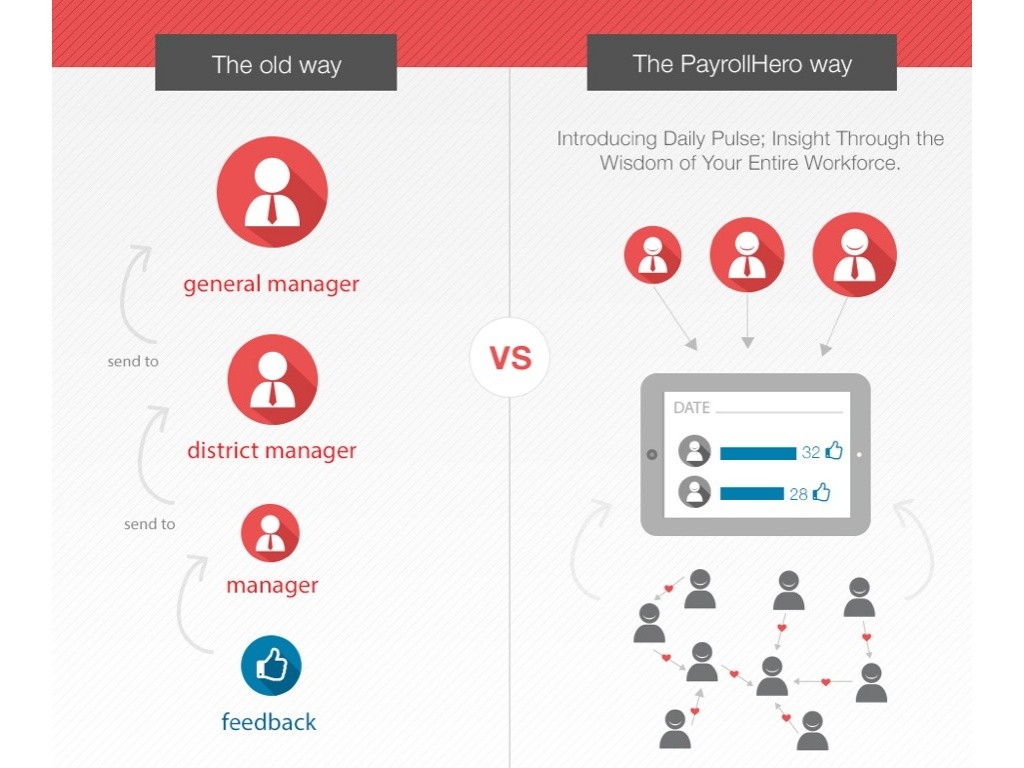
Giving credit where credit is due is an important task for managers to keep the morale of their employees up. Employees like to be noticed and praised for a job well done.
Why are managers not giving enough praise? Besides the fact that you are busy running around, taking care of daily operations; making sure everything is running as it should, finding out which employee did well for the last 4 weeks will take more effort. Most of the time, this task is not on the top of the priority list and so easily overlooked.
PayrollHero can help you look good to your employees!
Surely there are times where you wish you would have remembered to at least say ‘Good Job’ to Bob the cashier for working 8 hours and being the most helpful. Human errors like this can be avoided by using a simple app, where you can monitor your employees day to day work and track how they are performing accurately.
By using the employee feedback app, Daily Pulse, employees are able to ‘like’ their colleagues that was the most helpful at the end of the shift. Another plus, your customer can give their feedback using the Customer Feedback app too- by voting for the employee that was the most helpful to them.
You, the manager, will receive the data in real time via Xray Insights app. The app will show a clearer view of each employee performance and tracks the employee who is getting the most ‘likes’ on that particular shift. Information is readily available for you at a touch of a button. This makes your job so much easier! It also eliminate subjectivity in your decision as it is based on figures- not hearsay.
Work Place Transparency
At PayrollHero, we want to break the conventional workplace hierarchy by making information more transparent within the company. Using mobile or web apps, all managers can readily access whatever information required anytime, anywhere. We recognize that being on the ball is important when running a business- so time should not be wasted on you waiting for information from other managers.
The Data Might Even Surprise You!
You may be glad to find out that the employee that is actually doing great is the person you least expect. It could very well be the person who is clearing the dishes- that is the most helpful employee among the rest and the most ‘likeable’ to your customers.
The app works by making sure every employee is acknowledged, from the chef to the janitor. You can be the best manager who knows exactly the deserving employees to give credit to at the end of the day.
Read our post on Scheduling Best Practices for Managers.
Want to learn how to be a better manager?
Join our next Meetup on 10th Jun 2015 @ 4pm in Singapore.
We will be focusing on tips and tools you can use to better optimize HR and payroll processes, while cutting costs on time and creating a happier work culture.
Part I on Cloud Computing: 3 Reasons Why Your Business Should Use Cloud Computing Now
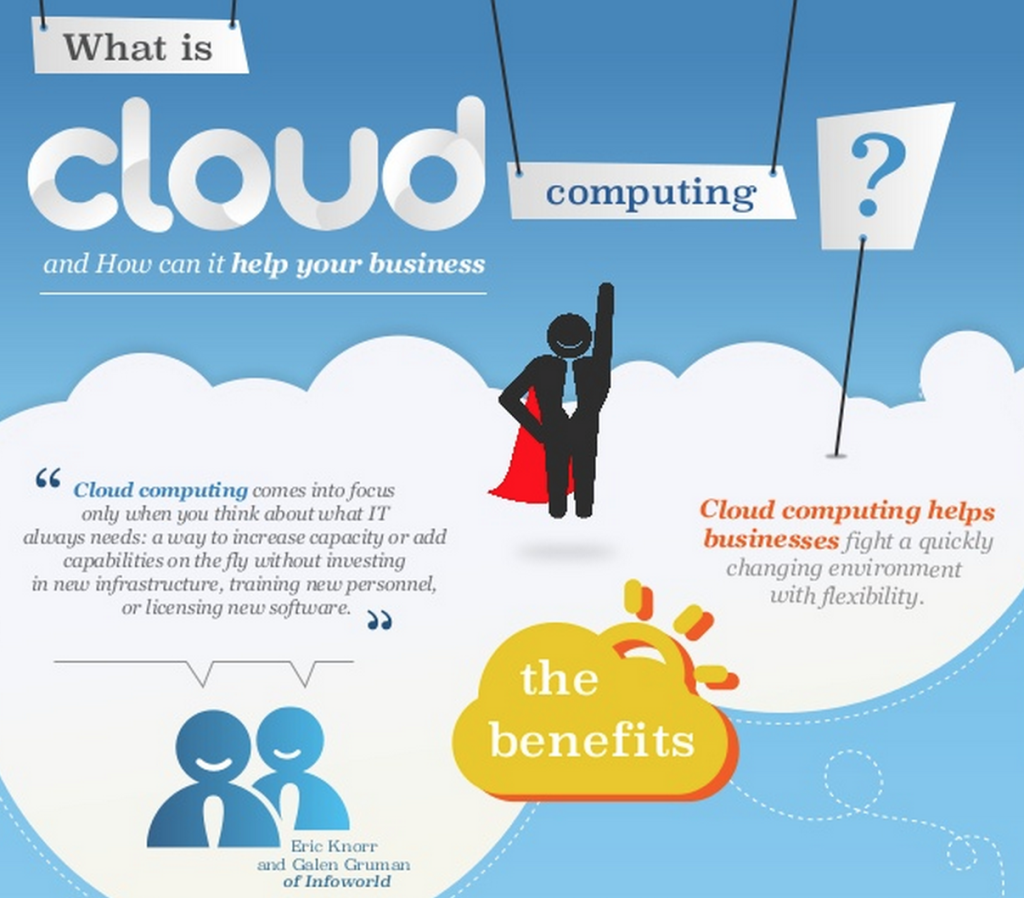 Cloud Computing, by definition, is “the practice of using a network of remote servers hosted on the Internet to store, manage and process data, rather than a local server or a personal computer.”
Cloud Computing, by definition, is “the practice of using a network of remote servers hosted on the Internet to store, manage and process data, rather than a local server or a personal computer.”
Let’s be honest, that sounds terribly boring. And you’re probably wondering: I don’t even know what half of that means.
As an intro to cloud computing, take a look at the infographic we have for you. Now, let’s talk about why your business needs to upgrade its IT infrastructure and adopt cloud computing with arms wide open. Using cloud computing services helps you increase efficiency, cut down on costs, and change the way you do business.
- Demand-Supply management: Cloud computing gives you the opportunity to be ridiculously client focussed using big data and data analytics. Imagine owning a gaming store that sold console games. If Game A was trending that week and Game B was not doing so well, data analytics would allow you to identify that trend, allowing you to stock up accordingly. Not only would you improve sales, you would manage inventory better and improve your turnover rates. For your business to be flexible and sustainable, you need solid data to back up your decisions. Cloud computing offers insight into your customer’s preferences. Using this data will give you the competitive advantage that you need.
- Cost reductions:
- By using the Cloud, you can cut costs by moving from the CAPEX model to the OPEX model. This is particularly useful for companies that have a high debt burden. Initial capital expenditure on IT assets or building your IT infrastructure is not fully deductible, which leads to higher taxes. On the other hand, operating expenses on running services through the cloud are fully tax deductible. By moving your system to the cloud, you will be able to free up capital for other investments.
- There is another benefit to cloud computing on your balance sheet. Think about the IT infrastructure you have set up for your business. You have 10 servers that work perfectly well on a regular basis. All of a sudden, during a special discount that you are promoting through your website, you notice greater traffic. Now you need 5 more servers to sustain the traffic. However, the investment is too expensive for the limited amount of time that you are using it for. If you could rent and pay for servers for just a short period of time, wouldn’t that make more sense than investing in assets that will not pay off in the long run?
- Remote-monitoring: This one is easy. By using the Cloud, you can access your company’s data anywhere and at any time. When you’re on that much needed holiday in the tropics, your spreadsheets back home will be of no use to you. With Cloud Computing, you can get back to your business at a moment’s notice and respond to any emergency, all this while sipping on some mai tais and preparing for the beach volleyball game.
Now, if you already knew all of the above, then you have probably contemplated the next question. What about security? We understand, recent security breaches that have led to disasters for some companies do not instil confidence in what we are talking about. Sensitive information is at risk when you are using Cloud Computing. But here is what’s important for your business: if IT is not your core competency, then no matter how much you invest in security, a company that rents out servers probably has a more secure system in place. Again, this is about how you want to use your resources to focus on your business.
Singapore is a great example on how Small to Medium sized Businesses (SMBs) have adopted cloud computing. Cloud Comrade, a company that provides solutions on cloud management, says that around 63% of businesses in Singapore turn to companies like Cloud Comrade for cloud technology solutions. Singapore is one of the fastest adopters of cloud computing services.
Altogether, the reasons for cloud computing, especially for SMBs was put very simply by Pavel Ershov, Parallels’ vice president of service providers business for the Asia Pacific and Japan regions:
“SMBs today have the best of both worlds to help them grow their businesses–cloud services offerings with enterprise-grade capabilities at affordable costs”
Want to learn more about PayrollHero? Check out our country specific websites:
Singapore, Philippines, Malaysia, Indonesia, Thailand | Canada, USA
What is the future of POS for retail?
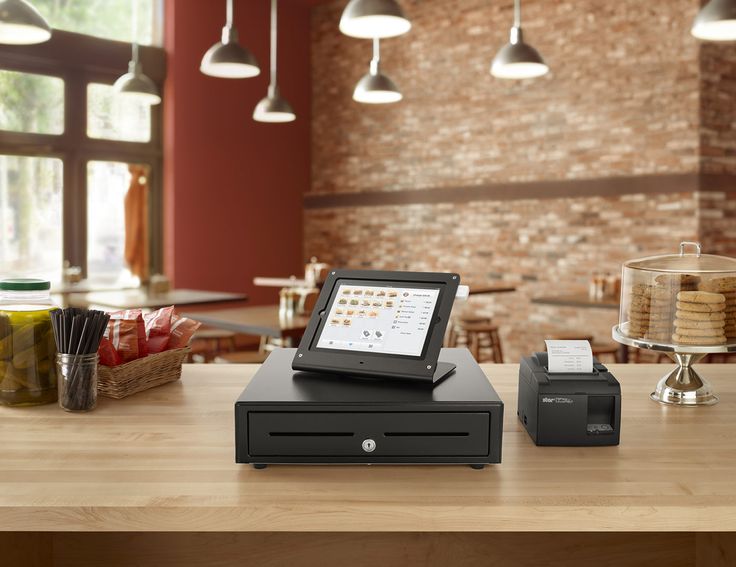
Image by squareup.com
The mobile point of sale system seems to be the buzzword circling around today’s retail industry. But the real question is if the mobile POS system is going to take over the traditional hardware?
We have notice recently that there is a movement towards the mobile POS option, however most retailers still find comfort with the traditional hardwired POS system for their business. Probably for this simple reason- business owners find the traditional machine more familiar to manage, secure and it comes with all the bells and whistles (eg, bar code scanner, receipt printer) at one price.
But do small businesses need to invest a large sum of money to get an all-in-one POS system from the get go? Or would it be wiser to have software that grows with your business, and add to the hardware as they need it?
Let’s think about the concerns of a business owner when choosing the right POS system.
The most common concern shared by most owners is that the traditional hardware gives them the sense of security and familiarity. The POS machine itself is built to withstand the daily grind of business. The POS is plug-in to a power point and does not require charging. The mobile POS system option can only last up to 3-4 hours on the phone or tablet, after which an hour downtime to charge. For a restaurant, this arrangement might not be suitable because POS system must be up and running from start to finish.
Next, a report by the Federal Reserve reveals that security concerns is another main reason why traditional POS system triumphs over mobile systems. Identity theft has been the top complaint on the Federal Trade Commission’s list of complaints for 13 years in a row. This shows that when it comes to credit card transactions, owners have more trust in POS systems than the mobile systems.
Additionally, the mobile system depends completely on the signal strength from wireless provider or a Wi-Fi connection which isn’t as reliable and secure compared to a hardwired connection. While some owners are skeptical about mobile POS not having security to protect cardholders data, business owners can be assured that mobile apps like Square adhere to the PCI Data Security Standard (PCI-DSS).
Another worry with mobile devices being small, it can be easily misplaced or stolen. Comparable to the bulky POS system- it is definitely harder to run out the door with that.
But, owners might not need to choose after all.
Although POS systems might be the better option for retail businesses, it doesn’t mean that the mobile software should be disregarded. The smart business owner would see these 2 systems as mutually exclusive and use both methods to provide better service and enhance customer experience. One does not need to replace the other.
Take for example, a restaurant having their waitresses carry personal tablets to ring up food orders at the table within seconds, that information is also automatically reflected on the main POS system. By cancelling out the time they would usually take to key every order at the machine- this saves time on service and improves workflow. The customer can then physically pay for their meal using the traditional POS system at the cashier once they are done.
Retail outlets in Singapore are doing just that! Taking customer experience to another level through an integrated POS system. Restaurants like Sakae Sushi improves efficiency and flow by installing iPad Minis at the table for customers to ring up orders on their own, without waiting for a waitress. The central POS system at the cashiers handles all the payments after customers are ready to pay for their meal.
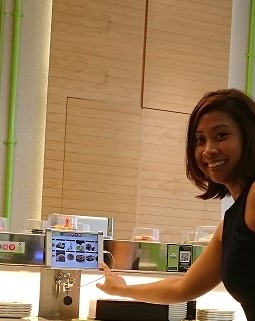
iPad Mini for food orders at Sakae Sushi
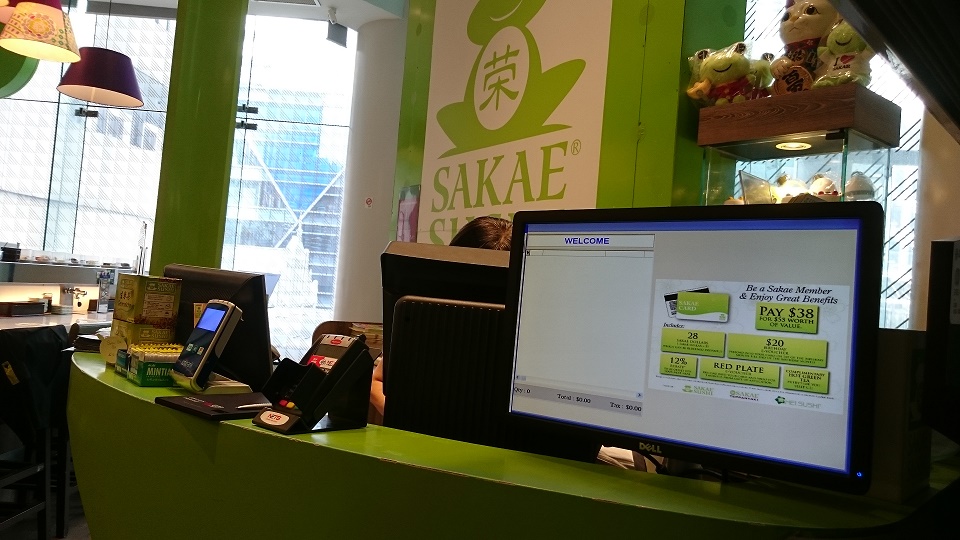
Central POS system at Sakae Sushi
Saving costs with technology. The integrated POS system at your restaurant or retail outlet, would mean that business will need less employees to wait on customers. Service has become self-sufficient.
Last words. It makes sense for business owners to combine the familiarity and security of traditional POS system with the added features from the mobile system to enhance efficiency and customer experience. Although it is important to consider when integrating software into your service; and depending on the nature of the business, reducing the number of staff in place of machines could also mean you will lose the human touch in your service.
Was this post useful? Comment on our blog, let us hear your thoughts.
Asia HR Leaders Forum in Singapore with Roffey Park
Earlier today, PayrollHero co-founder Stephen Jagger spoke at the Asia HR Leader Forum organised by Roffey Park. If you don’t know Roffey Park – they are an internationally renowned leadership institute based in the UK and Singapore, focused on developing people who develop organisations. Find out more on what they do here – www.roffeypark.com
Roffey Park had a unique approach for the forum. The most interesting segment would be the facilitated table discussions – where the 30+ HR professionals in attendance were split into 5 smaller groups, and each group was given a specific topic to discuss concerning HR with a “subject-matter-expert” leading that discussion. Each discussion was deeply insightful as participants actively shared their thoughts and experiences on major HR issues: changing employee mindsets, emotional intelligence, developing strategic thinking capabilities, staff morale and understanding the human dimensions of productivity.
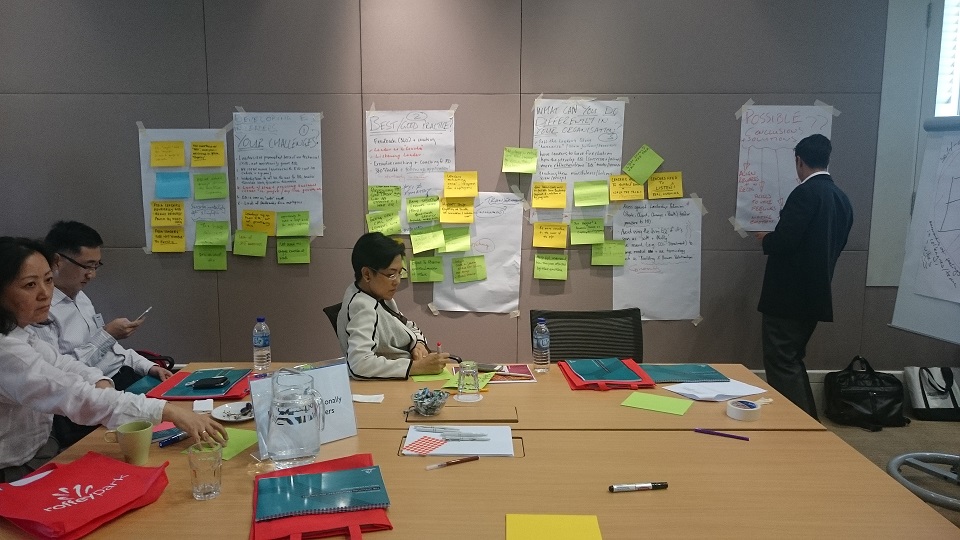
Facilitated HR Table Discussions
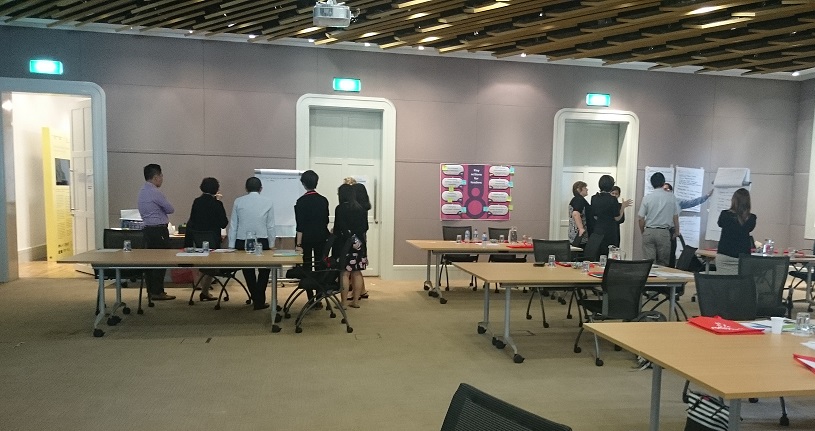
Participants in discussion
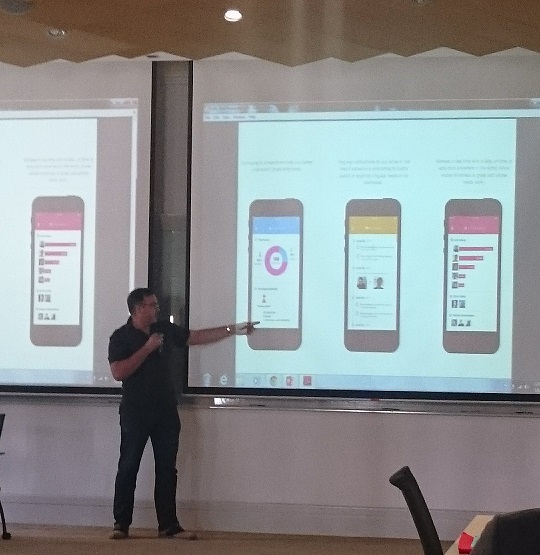
PayrollHero Xray Insights
Stephen closed the forum with a presentation on the importance of integrating a business intelligence component into HR systems. Steve shared the PayrollHero Xray Insights app, which provides businesses with useful analytics based on employee data, so managers can make better, intelligent decisions on human resources. He also ran through how our Adventure Engineer program works to attract and retain talent.
“I found the session yesterday really inspiring with the passion you have to make a difference.”
Simon Lau
Leadership Effectiveness & Organisation Development
Group Talent, Learning and Culture Standard Chartered Bank
You can see Steve’s presentation deck below:
Here is some of the material covered by Roffey Park:
Want to learn more about PayrollHero? Register for our next event on May 14th 2015.
Use PayrollHero To Help With Staffing Needs During Storms
 The weather in Southeast Asia plays havoc with businesses, but specifically with restaurants and retail businesses every rainy season. It is common that businesses don’t open, close down early or operate with less staff than required. Today is no exception in the Philippines.
The weather in Southeast Asia plays havoc with businesses, but specifically with restaurants and retail businesses every rainy season. It is common that businesses don’t open, close down early or operate with less staff than required. Today is no exception in the Philippines.
A weather storm has been on its way towards the Philippines for the last couple of days and as government, businesses and citizens prepare to deal with the consequences of the storm (read: massive flooding) I wanted to take a moment and share how PayrollHero is working to use data to help businesses cope with challenging weather systems.
As an example, take these three restaurants that are side by side in Fort Bonifacio; Da.u.de, TokyoTokyo and Wildflour. The first 2 are closed and Wildflour is open but closing early.
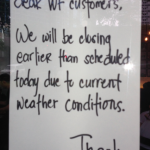 Now there are many reasons why businesses close during storms. Staff can’t make it to work, staff need to deal with issues at home, road flooding, Government advisory, etc. While it is good to keep that in mind, what I’m referring to here is using data within a restaurant or retail business to better understand your staffing needs.
Now there are many reasons why businesses close during storms. Staff can’t make it to work, staff need to deal with issues at home, road flooding, Government advisory, etc. While it is good to keep that in mind, what I’m referring to here is using data within a restaurant or retail business to better understand your staffing needs.
Wildflour is quite busy today (which is normal for them) but if you look at the options for people who want food in their specific area, they are the only choice because they were the only one open today. They are closing early, which the manager said was because they wanted to give the staff enough time to get home as many come from far distances.
What is the cost of being closed on a day like this? two days? three?
If you could find a way to be open, what is the profit? especially if your competition is closed?
So what does this have to do with PayrollHero?
When we first built PayrollHero we saw the trend of how weather effects employees time and attendance as well as how employee commute distance effects their time and attendance. We decided that we could use data and see if we could track the correlation between those items and employee attendance.
Within every PayrollHero account there is an “Analytics” tab (beta) that shows management as well as employees how their time and attendance stacks up against their colleagues. But one part of the analytics is built specifically for situations like this.
Weather
PayrollHero pulls in the weather for your office location and showcases it against employee time and attendance. The idea is to give you an accurate idea of how weather effects your business. Here are a couple examples:
As we continue to expand on the data, the idea is that PayrollHero can help you anticipate how the upcoming weather will effect your workforce as well as enable employees to make travel decisions based on the weather.
Imagine if you could call extra workers in to replace workers who have not even called in to say they can’t make it to work.
Commute Distance
The other data set we work with is the employees commute distance. PayrollHero knows where the employee lives, as we need that data for payroll, but we use that data to correlate how far away an employee lives from their place of work and how that distance effects their time and attendance.
Employers and employees can see the data and the idea is to help them both make better decisions on where to live, where to work, etc.
 There are many companies in Southeast Asia that pay a proximity bonus to employees who live closer to work as the employer knows that the closer they live, the less likely they are to miss work due to traffic, weather, etc. In PayrollHero, we show this data to help everyone make better decisions on where to work and where to live.
There are many companies in Southeast Asia that pay a proximity bonus to employees who live closer to work as the employer knows that the closer they live, the less likely they are to miss work due to traffic, weather, etc. In PayrollHero, we show this data to help everyone make better decisions on where to work and where to live.
Imagine you knew a storm was coming in and you could contact workers who live close to work to take the shifts so that you can stay open, keep your employee safe (ie. they don’t have to try and commute via flooded streets) and profit when others are closed!
Interested to learn more? Contact us as we would be pleased to setup a personal demo of PayrollHero. (signup here for a free, no obligation personal demo)
#StaySafe

